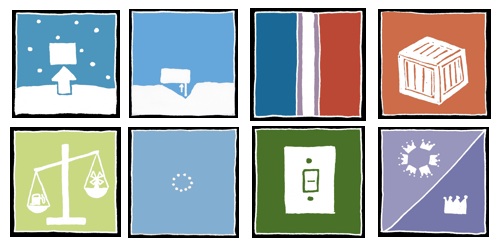
The conditions of midnight sun (when the sun does not set for many days in mid-summer) and polar nights (when the sun does not rise for many days in mid-winter) can cause depression or hypomania. The reason for this disturbance of mood may be because of a delay in the sleep-wake cycle. This cycle is usually regulated by the 24-hour dark-light cycle, while seasonal rhythms are affected by the amount of daylight. These are not maintained during the midnight sun and polar nights, and this poses a problem in an arctic setting. The severity of the symptoms are different depending on an individual's vulnerability to extreme variations of light. Check out this time lapse of the midnight sun condition in Antarctica.
The solution for this problem is relatively simple: there must be a control of light. This was considered in the designs of both the Fram and the Amundsen-Scott South Pole Station. In the midnight sun, curtains and other shading devices are used to simulate a dark environment to promote sleep at night. During polar nights, bright artificial lights are used to combat the loss of natural light in the daytime.
Below, the section of a wing of the South Pole Station demonstrates how the interior berths maintain a day-night cycle with artificial lighting and shading devices, despite the outside environment.
This section of the Fram also shows that it was also able to maintain the day-night cycle. Even when the engine was dismantled, a windmill was used to provide electricity.



No comments:
Post a Comment